It has become quite popular nowadays to speak about mystical experiences and “siddhis”. Most yoga and meditation groups speak of them, along with other esoteric blabber such as the raising of kundalini, opening of chakras, and other things which no one has actually experienced. On one side we have new age gurus speaking of siddhis very cheaply as though they are as common as sand on a beach, and on the other hand we have “rationalists” who discount siddhis all together as mere fantasy.
Siddhis are a reality, and the science behind them has been passed down from time immemorial by the rishis and preserved in the Vedic texts. In actuality nothing is mystic. Everything functions according to natural laws. The rishis, by virtue of their expanded consciousness, understood the functioning of matter on the subtle levels of sound and mind. They actually understood the absolute laws of nature, and not just the surfacial reactions caused by mixing gross physical elements.
True transcendentalists have no interest in mundane material life. As such, the rishis did not give much importance to material powers and perfections. They were not interested in acquiring wealth, power, fame, etc. Their aim was much higher.
Krishna says in the Bhagavad Gita:
vishaya vinivartante
niraharasya dehinah
rasa-varjam raso ‘py asya
param drishtva nivartate
“The embodied soul may be restricted from senses enjoyment, though the taste for sense objects remains. But, ceasing such engagements by experiencing a higher taste, he is fixed in consciousness.”
We must imagine how great the spiritual experience of the rishis and yogis must be to turn away from absolute material power – control over the fundamental laws of nature – and sit alone in the forest absorbed in meditation. That is the brahmananda, paramananda, shivananda, yogananda spoken of in the scriptures – the spiritual bliss which is the constitutional nature of the self. Experiencing a higher taste of spiritual bliss, they are able to renounce all lower material sensual enjoyment – both subtle and physical.
How else can we explain the countless yogis, jnanis, tapasvis, siddhas, and rishis who dwell in the sacred realm of the Himalayas. High in the mountains, surrounded by a forest covered in snow. The rishis are there even today meditating on the banks of the Ganges. What keeps them there, living in apparent poverty? Are they fools, are they mad? No, on the contrary, the world is mad and we are all fools. For we are chasing after the broken glass of sense enjoyment, while they are offering us the diamonds of spiritual bliss.
The rishis are calling to us. We must heed their call. Whether we are in the city or in the forest, it makes no difference. Internally we must all become rishis and sadhus – transcendentalists of the concrete jungle. Be situated in your place and attain the goal of life, this is the message of the rishis and the Upanishads – sthane sthitah shruti gatam tanu-van-manobhih.
The aim of those following spiritual discipline is to become free from the desire to lord over material nature. Those seeking mystic perfections are motivated by their desire to control matter, subtle and gross. Those who are sincerely interested in spiritual life should try their best to become free from such material desires. I have seen many people who belong to lines that focus on siddhis. Some of the siddhis are amazing, some are just stupid. Everything from being able to pull chocolate out of the sand (the specialty of one particular sadhu) to being able to change the density of matter. Through various processes of meditation one’s mind is expanded and the understandings of matter become much greater. All matter is based on sound, so through sound it can be manipulated. Furthermore, the physical realm of our experience exists and is based on the subtle mental realm. Those who have conscious access to that realm can know and do things that we would consider to be mystical or supernatural.
There are eight primary siddhis described in the scriptures, and ten secondary perfections. Lord Krishna confirms this in the Srimad Bhagavatam as follows:
siddhayo ‘shtadasa prokta
dharana yoga-para-gaih
tasam ashtau mat-pradhana
dasaiva guna-hetavah
“The masters of the yoga system have declared that there are eighteen types of mystic perfection and meditation, of which eight are primary, having their shelter in Me, and ten are secondary, appearing from the material mode of goodness.”
The eight primary mystic perfections are as follows:
Anima-siddhi – The ability to decrease the size of one’s body and become smaller than the smallest particle. Through this siddhi one may enter into stone or change the density in one’s body, enabling one to pass through solid matter.
Mahima-siddhi – The ability to increase the size of one’s body, ultimately enveloping the universe.
Laghima-siddhi – The ability to make one’s body lighter than air and fly at will. The perfection of this siddhi enables one to travel on the sun’s rays and enter into the sun planet.
Prapti-siddhi – The ability to manifest any object one desires within one’s hand. This siddhi removes the limitations of space which seperate two objects from each other. It is said one will even be able to touch the moon with one’s finger [i.e. the limitation of distance is removed].
Prakamya-siddhi – The ability to attain anything one desires.
Ishita-siddhi – The ability to control the sub-potencies of the laws of nature. This enables one to control various energies and seemingly defy the laws of nature. On the lowest level, one may make fire come from one’s mouth, etc.
Vashita-siddhi – The ability to bring others under one’s control.
Kamavasayita-siddhi – The ability to attain anything anywhere. This is the highest of the eight and contains most of the abilities of the other perfections.
The ten secondary perfections are as follows:
1) The ability to be free from hunger and thirst. With this perfection one no longer depends on food and water for maintenance of one’s body. One will be able to sustain himself simply on prana, the life air.
2) The ability to hear things far away. With this perfection one can hear any conversation spoken anywhere in the world.
3) The ability to see things far away. With this perfection one develops a mystic vision, by which one can see any person or place. Sanjaya, the disciple of Vyasa, used this siddhi to see and hear the conversation between Krishna and Arjuna (known as Bhagavad Gita) which took place on the battlefield of Kurukshetra, though he was situated far away.
4) The ability to travel at the speed of the mind. With this perfection one can travel great distances in a moment simply by thinking of the destination.
5) The ability to assume any form one desires. This enables one to change one’s physical body at will.
6) The ability to enter the bodies of others. This perfection enables one to enter into the bodies of others and enjoy through their senses. Since ghosts do not have physical senses, they often resort to this to satisfy their desires through other’s bodies.
7) The ability to control the time of one’s death. With this perfection one may choose the time of leaving his body.
8) The ability to witness the pastimes between the demigods and the celestial girls called apsaras.
9) Satya-sankalpa – Perfect accomplishment of one’s determination. Whatever one desires to happen will happen.
10) Satya-vak – Giving orders that are unimpeded. With this perfection one’s very word is truth. Simply by saying something it occurs.
Besides these eighteen, there are five inferior perfections as follows:
The ability to know past, present and future.
The ability to tolerate heat, cold and other dualities.
The ability to know the minds of others.
The ability to check the influence of fire, water, poison, and weapons.
The ability to remain unconquered by others.
The primary eight siddhis are of a much higher order than the rest, and require severe discipline to accomplish. It is very rare that one will achieve such a perfection. But for every siddhi there is a reflection that is easily attained. The processes for attaining these minor siddhis are usually outlined in the Tantra-shastra. [Please refer to the course on Vedic literature to understand what is Tantra-shastra.] The processes generally involve doing upasana to a particular deity, who when pleased reveals their form to the Sadhaka. On the way many siddhis naturally develop due to expansion of the consciousness through mantra upasana and meditation. According to the category of deva one worships the result will come either quickly or after a long time, and the result will either be temporary or permanent. If you aim at a low entity, for example a ghost, the result will be quick, but it will be of minimal value. Whereas if your upasana is to a higher divinity, the result will be much more permanent and significant, but will take much more time to accomplish. The aim of the Sadhaka generally depends on his conditioning within the modes of nature. This is described by Krishna in the Bhagavad Gita:
yajante sattvika devan
yaksa-raksamsi rajasah
pretan bhuta-ganams canye
yajante tamasa janah
“Men in the mode of goodness worship the demigods; those in the mode of passion worship the yakshas and rakshasas; and those in the mode of ignorance worship ghosts and spirits.”
As you progress in the modes, the worship becomes more and more purified, from ignorance to goodness. When you finally transcend the modes by worship of Krishna, the worship is completely transcendental beyond the influence of material nature.
The long term results of various upasanas are also described by Lord Krishna:
yanti deva-vrata devan
pitrin yanti pitri-vratah
bhutani yanti bhutejya
yanti mad-yajino ‘pi mam
“Those who worship the demigods will take birth among the demigods; those who worship the ancestors go to the ancestors (pitruloka); those who worship ghosts and spirits will take birth among such beings; and those who worship Me will live with Me.”
Sri A.C. Bhaktivedanta Swami Prabhupada, our divine spiritual master, says in his commentary to this verse:
“Pishacha (ghost) worship is called ‘black arts’ or ‘black magic.’ There are many men who practice this black art, and they think that it is spiritualism, but such activities are completely materialistic.”
It should be noted that in this verse from Bhagavad Gita the first three types of worship are described as a vow (vrata). The worshipper is making a vow to the object of worship in exchange for some material gain. An agreement is being made between the two parties. But in regards to the worship of Krishna it is stated to be devotion (mad-yajinah). There is no expectation on the part of the devotees. The true yogi, meditating on the Paramatma within his heart, has no desire for mundane mystical perfections. Their worship is completely unalloyed, without a tinge of desire for material enjoyment.
Another category of siddhi involves the control of the object of worship. You do not directly acquire a siddhi, but you maintain control over an entity who by nature of their higher existence possess natural powers. This relationship is maintained through your worship to the entity, who receives nourishment from the worship.
According to the level of the deity the results are greater and more permanent. But the greater the results the more difficult the process is. As you move up from the lowest levels of worship of ghosts, to yakshas and yakshinis, to minor devas, the process becomes harder and harder (i.e. there is more sacrifice and sincerity involved). The perfection one achieves by worshipping a ghost cannot be compared to that attained by worshipping someone like Ganesha, but the worship of Ganesha will require more on the part of the Sadhaka. The results will not nearly be as temporary as that attained by worshipping a ghost or spirit. In the same way, when you go beyond the worship of the devas and you take up the worship of Lord Krishna, the Supreme Personality of Godhead, the perfection you will achieve will be much greater than anything that is offered within this material world. And more than that, it will be the most permanent (eternal to be precise). But at the same time, to attain it will require the most sacrifice and sincerity. From the bottom of the grades of worship up to the top most level (worship of Lord Krishna) there is a direct correspondence between the necessary endeavour for perfection and the permanence of the result.
The third chapter of the Yoga sutras describe the following minor siddhis:
The ability to know all languages including those of animals.
Knowledge of one’s past lives.
Knowledge of the nature of other peoples minds.
The ability to make one’s body invisible.
The ability to make the sounds of one’s body unhearable.
The ability to make everyone happy and joyful.
The ability to possess great strength.
The ability to locate hidden things.
The knowledge of the fourteen planetary systems.
The knowledge of the arrangements of stars.
The knowledge of the movement of stars.
The knowledge of bodily anatomy.
The ability to remain motionless.
The ability to perceive the celestial beings known as siddhas.
The understanding of consciousness.
The knowledge of the soul.
The ability to walk on water, thorns and similar objects.
The ability to surround oneself with a blaze of light.
The ability to be omnipotent and omniscient.
How these powers are attained is summarized by Patanjali as follows:
janmaushadhi-mantra-tapah-samadhijah siddhayah
“The mystical perfections may be obtained either by birth, by elixir, by the chanting of mantras, by austerities, of by attainment of samadhi.”
The Vedic texts describe 400,000 different species of humans existing throughout the universe (such as yaksha, rakshasa, vanara, etc.) In many of the species, they are born automatically with various powers. This is the siddhi attained by birth. By reciting certain mantras and performing austerities one’s consciousness is expanded and one develops supernatural abilities. Finally, by attaining the state of complete absorption in meditation, samadhi, one attains powers depending on the object of one’s meditation. For example, one who meditates on the sun gains complete knowledge of the planetary systems; one who meditates on the relationship between the ear and the ether attains the ability to hear anything.
After listing all of these apparently wonderful powers, Patanjali provides a warning:
tad-dvairamyadipi doshabijajakshaye kaivalyam
“By giving up even these powers the seed of evil is destroyed and liberation follows.” This is the last test of the yogi.
Patanjali mentions one final method for attaining these perfections:
pratibhadva sarvam
“All these powers will come to one whose mind is spontaneously enlightened through purity.”
Even without following a mechanical process of meditation, if one’s mind is naturally purified by spiritual advancement and unalloyed devotion to God, one will automatically attain these various supernatural abilities. Lord Krishna confirms this in the Bhagavad Gita when He says:
yoginam api sarvesham
mad-gatenantar-atmana
sraddhavan bhajate yo mam
sa me yuktatamo matah
“Of all the yogis, the one with great faith who always abides in Me, thinks of Me within himself, and renders transcendental loving service to Me – he is the most intimately united with Me in yoga and the highest of all. That is My opinion.”
The topmost yogi is not someone who has artificially restricted his senses through mechanical processes (like asana, pranayama, pratyahara, etc.), but one who has naturally engaged all of his senses in the devotional service of the Lord. The devotee, having experienced the spiritual bliss of bhakti-yoga, has no interest in mundane perfections and remains fixed on his ultimate aim to attain the lotus feet of Krishna. That is the ultimate perfection, sam-siddhi:
mam upetya punar janma
duhkhalayam ashashvatam
napnuvanti mahatmanah
samsiddhim paramam gatah
“After attaining Me, the great souls (mahatmas), who are yogis in devotion, never return to this temporary world, which is full of miseries, because they have attained the highest perfection (sam-siddhi).”
Questions and Answers
Question: For most of my life I have been able to feel objects in my left hand that aren’t there and manipulate their texture and shape, etc. Do you know anything about this?
Thank you very much for your question. What you are experiencing is the residual effects of prapti-siddhi from your previous life. One of the sadhakas at our ashram had similar experiences when he was young. He would feel something like an itching sensation in his hand and he would feel the subtle presence of some object. When he would close his eyes, he could see what object was there. Later by mantra upasana he was able to revive the siddhi to the extent that he could materialize things within his hand.
The prapti siddhi enables one to acquire any object one desires by transfering it from one location to one’s hand. As mentioned in the Bhagavad Gita, there are eight material elements:
bhumir apo ‘nalo vayuh
kham mano buddhir eva ca
ahankara itiyam me
bhinna prakritir ashtadha
“Earth, water, fire, air, ether, mind, intelligence and false ego – all together these eight constitute My separated material energies.”
The Sankhya system of philosophy explains how each element telescopes out from the previous element. The first physical or gross element is the ether. Within the ether all the other four gross elements are present (earth, water, fire and air) in a subtle form. The subtle quality of ether is sound, and from the sound expands the air. The subtle quality of air is touch (movement), and from the touch expands the fire. The subtle quality of fire is sight, and from the sight expands the water. The subtle quality of water is taste, and from the taste expands the earth. And finally, the subtle quality of earth, the last of the physical elements, is smell.
Thus you have a telescoping effect of the elements and their subtle qualities beginning from ether down to earth. Since each element is manifesting from the previous, each new element contains all of the qualities of the previous elements. The ether element, being the first, only possesses the quality of sound. One cannot touch, see, taste or smell ether. The air element, having expanded from the ether, possesses both the qualities of sound and touch. One can feel and hear the movements of air, but one cannot see, taste or smell the air. The fire element’s added quality is sight. Thus one can see, touch and hear the fire, but one cannot taste or smell fire. The water, having expanded from the fire, can be heard, felt, seen and tasted, but not smelt. And earth, being the final element, contains all the five qualities of sound, touch, sight, taste and smell.
This sequence is the natural sequence of manifestation of gross matter. The prapti siddhi enables one, through mantra, to reverse this process and transform gross physical objects into ethereal objects by merging the respective elements into their source element. Thus one takes an object located in a particular location, and by utilizing mantra siddhi, one merges the earth element into the water element, the water element into the fire element, the fire element into the air element, and finally the air element into the ether element. As you merge each element into the previous, the corresponding quality disappears (being merged back into the source element). In this way, a physical object is transformed into an ethereal object with no quality other than sound. This ethereal object can be transferred over space by mind, and then the entire process is reversed to remanifest the original object in one’s hand.
What appears as a mystical feat to most is actually manipulation of the subtle laws that govern physical nature. There are eight major siddhis and ten secondary siddhis, all of which are based on manipulation of the subtle laws of nature.
To revive this latent siddhi you will need to take up mantra upasana very seriously.
You must rekindle your spiritual pursuits. In your previous life you had undertaken much sadhana. Now continue from where you left off and perfect your life. These siddhis are not important at all. They will arise in anyone who takes seriously to spiritual practices. For the weak minded they are an obstacle on the path of self-realization. Their use is only to reaffirm one’s faith that one is progressing on the path.
“You have mentioned [in Tattva Prakasha 1.1] that at the final devastation Lord Brahma will also have to face his karma but I have indeed read that Lord Brahma goes to Vaikuntha upon the final devastation. Please clarify.”
The scriptures state:
brahmana saha te sarve
samprapte pratisancare
parasyante kritatmanah
pravishanti param padam
“Brahma along with all of his followers enter into the supreme abode at the time of devastation.”
This verse is in reference to the present Brahma of this particular universe, who is a pure devotee of the Lord. It does not mean that every Brahma in every universe will automatically attain liberation. Neither will every inhabitant of Brahma-loka automatically go to the spiritual world. Brahma is no different than any other living entity. If he engages in pure devotional service he goes to the spiritual world. The same is the case for any of us. If he does not execute unalloyed devotional service, he will take his birth according to his desires.
Sri Bhaktivinoda Thakura, a great saint in the line of Chaitanya, has sung:
kita-janma hau jatha tuwa das
bahir-mukha brahma-janme nahi as
“May I be born again even as a worm, so long as I remain Your [Krishna’s] devotee. I have no desire to be born as a Brahma averse to You.”
Very rarely there is a bahir-mukha brahma, a Brahma who is averse to the Lord’s devotional service. Generally all Brahma’s are favourable to bhakti, but there are exceptions. Sri Viraraghava acharya has stated, based on revelation, that two brahma-kalpas (lives of brahma) ago within this universe there was a bahir-mukha brahma. Otherwise we generally do not get information of what has occured in other universes, or even within the same universe in prior creations.
Question: Is it possible to tell one’s future?
Dear Sadhaka,
There are ancient sciences that enable one to know the destiny one has created for himself in previous lives. Our future is based on the previous activities we have performed and the karmic reactions we have accumulated. At the same time, free will is powerful enough to overcome any fate that one may have, provided it is powered from a spiritual source. It is like the water flowing in a river. Generally the water will follow the river bed, and it will not flow above the river bank. But it is possible if there is enough force for the water to make a new path. Such an occurrence is very rare. Thus, if a man sees a river flowing, he can “predict” the path it will follow. It will naturally follow the riverbed towards the ocean. Our futures can be known in a similar manner, but 99% of modern astrologers do not know the actual science behind it. They are simply interested in making money from the public. Only a spiritually powerful person has the purity and honesty to be able to tell your future in truth.
Question: Can I know what will be my future. Also, can I get rid of bad luck and if so how?
Dear Sadhaka,
Everyone’s future in this world is the same. We are all moving towards death. Time is constantly ticking away, decreasing our life by the second. This is the only future that everyone can be certain of. It is possible to know other aspects of one’s future and destiny, but the information is not as important as this.
For all the wealth in the world, one cannot buy back one second of time wasted. Thus there is nothing more valuable than time. Use your time valuably in spiritual pursuit. Then you will be able to know your ultimate future, and become free from the bondage of “destiny”.
Bad luck is very simple to remove. You must take up a daily spiritual sadhana, for by spiritual strength only can destiny be changed. Spend at least 10 minuted a day in the morning doing nama japam. Recite the names of Hari and meditate on the sound vibrations of the divine names. Swami Shivananda, the great saint from Rishikesh, has advised that this is the simplest way by which we can become free from the influence of bad luck.
Actually there is no such think as “luck”. Everything happens due to our previous activities. The Karmic reactions are comming to us from previous lives of activity. We must burn up the seeds of karma before they sprout into reactions. For our previous good activities we will experience enjoyment or happiness, and for our previous bad activities we will experience suffering or disturbance. Those who have knowledge of these laws of nature know there is no luck, but only the natural law. Develop your spiritual strength and you can burn the karmic reactions to ashes. The scriptures describe that just as dry grass is instantly burnt to ash, in the same way the chanting of Hari’s name will burn away the sinful reactions. If you truly want to become free from the control of your karmic reactions, take up a daily spiritual sadhana. Spend ten minutes a day in meditation on the mantra:
hare krishna hare krishna krishna krishna hare hare
hare rama hare rama rama rama hare hare
This will benefit you immensely.

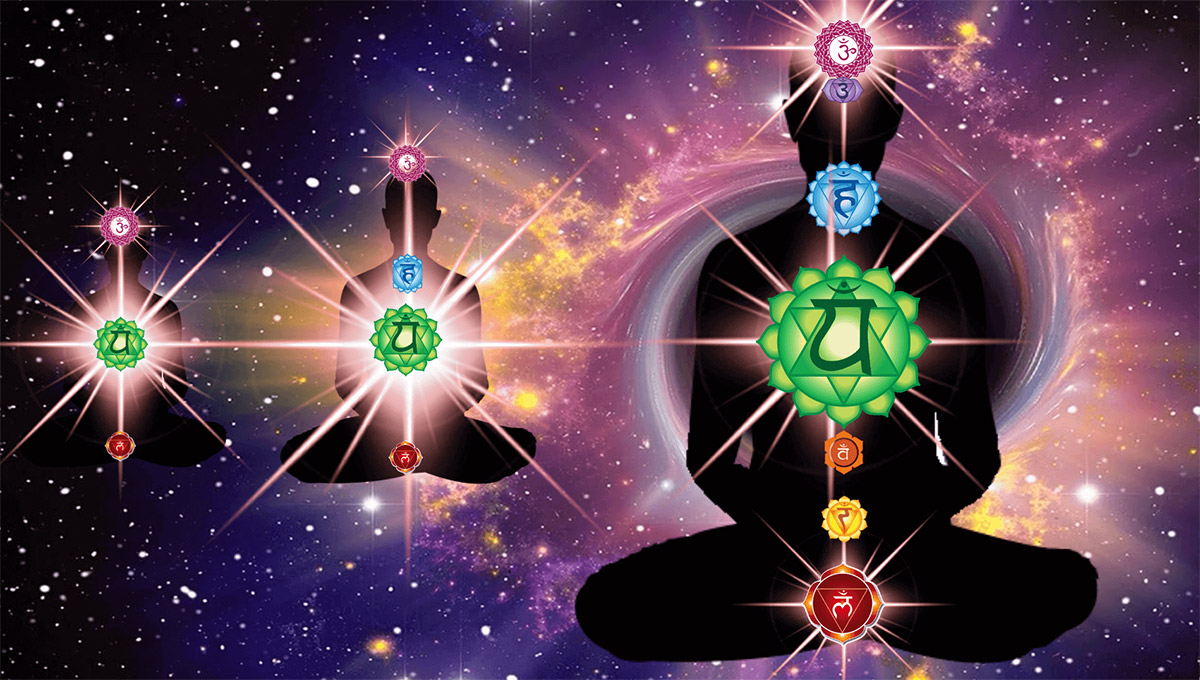




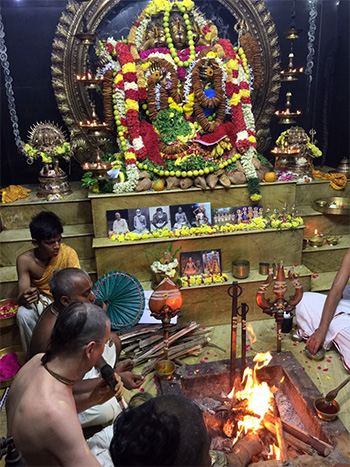

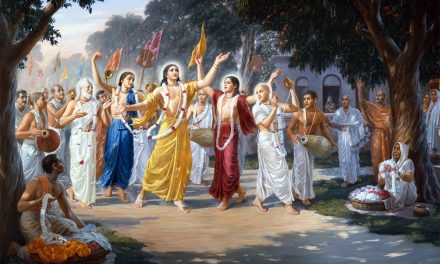
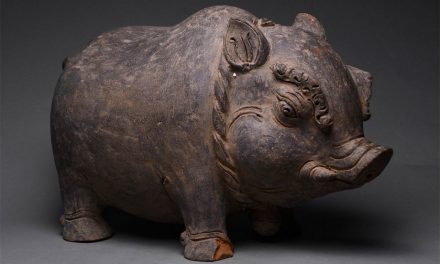
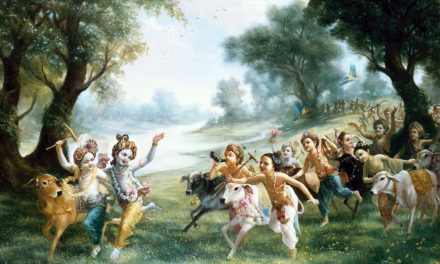
Greetings and Happy New Year!
Is is possible to visit Bvashram?
Thank you!
I am hypnotised after coming from Satyananda Yoga Vidyalaya about 28 years ago.I want to be myself rehypnotised.Can I?I did Yog Nidra.
can you suggest me any books regarding siddhis and mystical experiences?
Thank you for this informative and sincere explanation. The renunciation of material desire, even the manifestation of siddhis, remains a challenge for me. The most valuable statement in the above essay was “These siddhis are not important at all. They will arise in anyone who takes seriously to spiritual practices. For the weak minded they are an obstacle on the path of self-realization. Their use is only to reaffirm one’s faith that one is progressing on the path.”
I pray that the Great Soul within all beings awaken and stirs with longing for unity with the Infinite Divine.
Krato Smara, Krutam Smara.